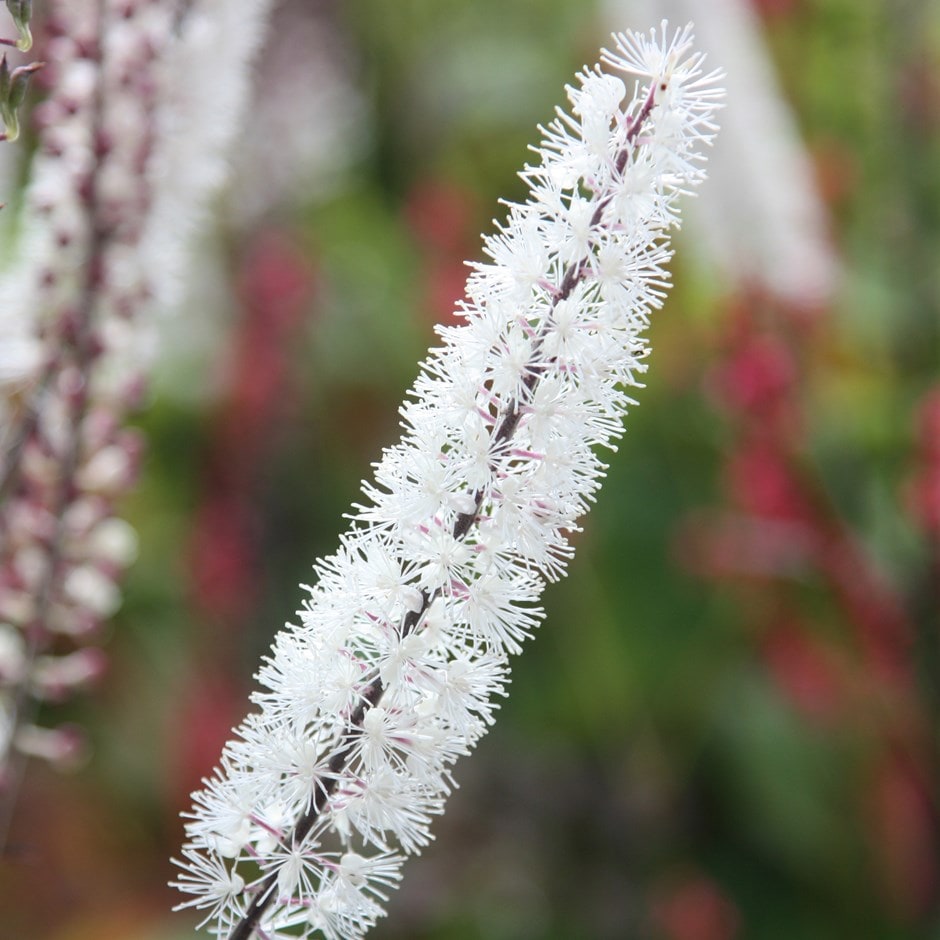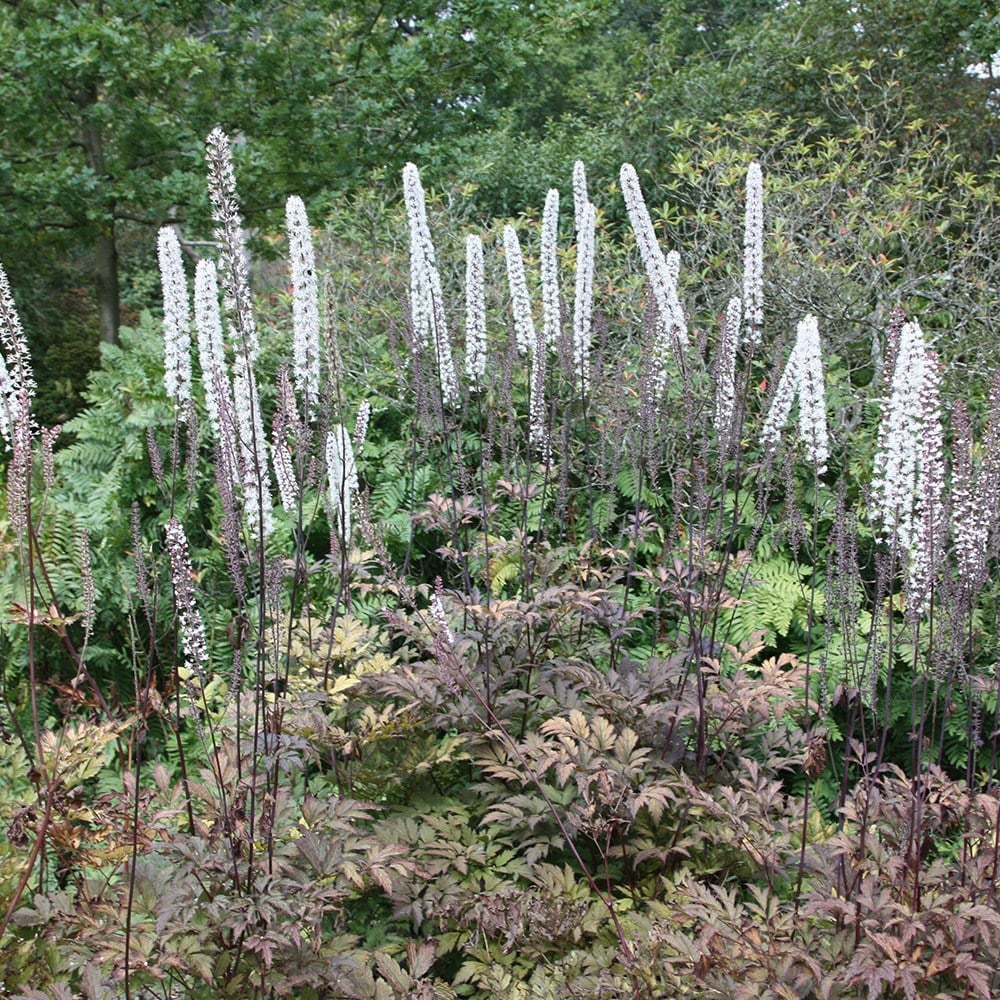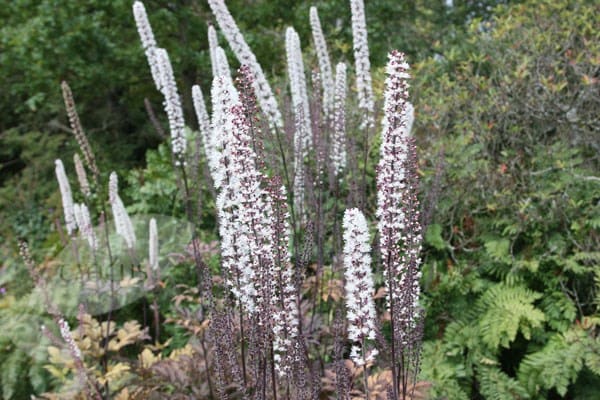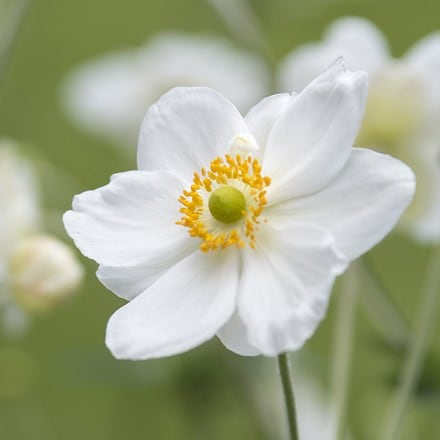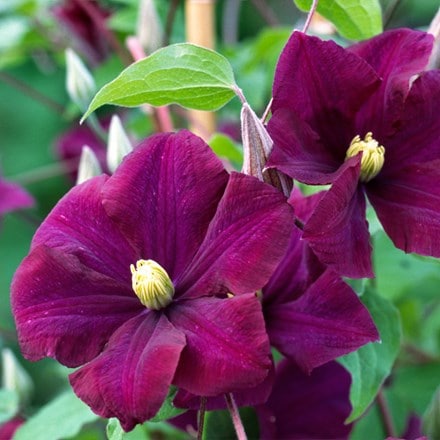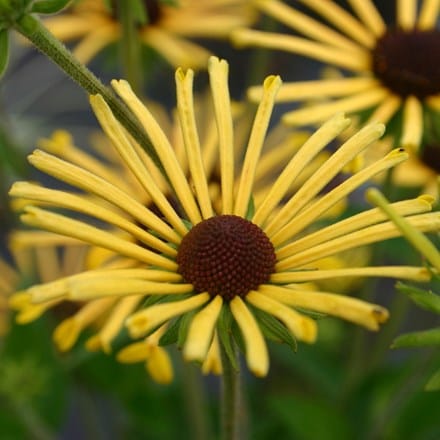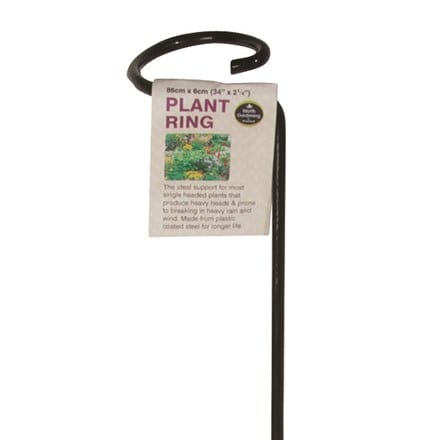Actaea simplex Atropurpurea Group
bugbane (syn. Cimicifuga)
- 9cm pot
- £12.74 £14.99
- In stock (shipped within 2-3 working days)
- 3 × 9cm pots
- £29.74 £34.99 £9.91 each
- In stock (shipped within 2-3 working days)
Delivery options
- Standard £5.99
- Position: partial shade
- Soil: Moderately fertile, moist but well-drained soil
- Rate of growth: average
- Flowering period: September to October
- Hardiness: fully hardy
Formerly known as a Cimicifuga, this bugbane is a dramatic, stately perennial, with its slender, bottlebrush-like, pale pinkish-white flowers, which appear in September and October above clumps of lobed, purple-flushed leaves.
The foliage colouring of these seed-raised plants will vary somewhat from plant to plant, but also external factors such as the time of the year and the available light will play a part.
It's also a useful plant because it comes into its own late in the season, and it will flourish in damp shade. It can also get quite tall, so try it towards the back of a border, and avoid removing the faded flowerheads as they provide an interesting silhouette in the winter garden.
Dr James Compton (the man responsible for their classification), has said that these plants prefer atmospheric moisture to thrive. 'Think of trillium country', he said, 'on the acid side of neutral, light and leaf-mouldy but able to retain moisture'.
The foliage colouring of these seed-raised plants will vary somewhat from plant to plant, but also external factors such as the time of the year and the available light will play a part.
It's also a useful plant because it comes into its own late in the season, and it will flourish in damp shade. It can also get quite tall, so try it towards the back of a border, and avoid removing the faded flowerheads as they provide an interesting silhouette in the winter garden.
Dr James Compton (the man responsible for their classification), has said that these plants prefer atmospheric moisture to thrive. 'Think of trillium country', he said, 'on the acid side of neutral, light and leaf-mouldy but able to retain moisture'.
Wear protective gloves and other protective equipment when handling Actea.
When planting, incorporate some well-rotted organic matter with the soil and backfill around the plant. Water well until established.
Taller plants in exposed positions may need support, and congested clumps can be lifted and divided in late autumn or early spring.
When planting, incorporate some well-rotted organic matter with the soil and backfill around the plant. Water well until established.
Taller plants in exposed positions may need support, and congested clumps can be lifted and divided in late autumn or early spring.
- Humans: Harmful if eaten
